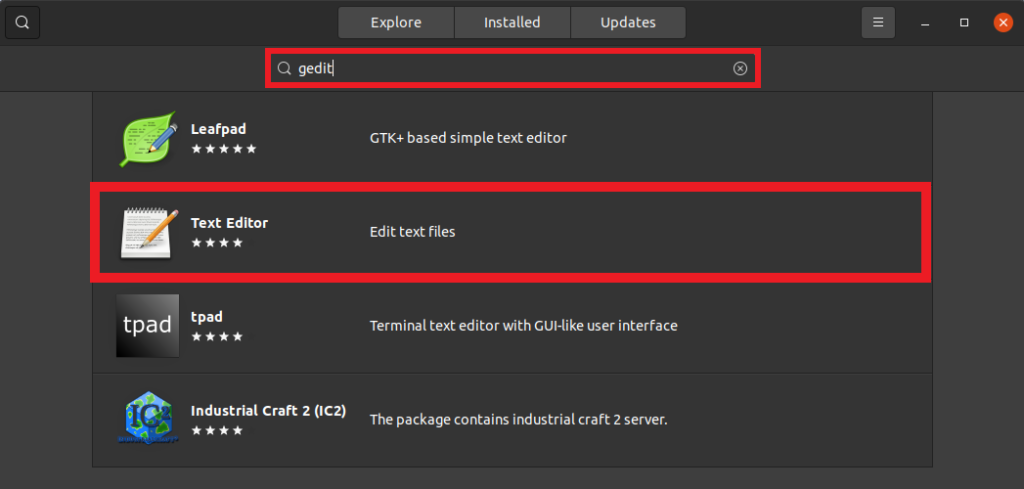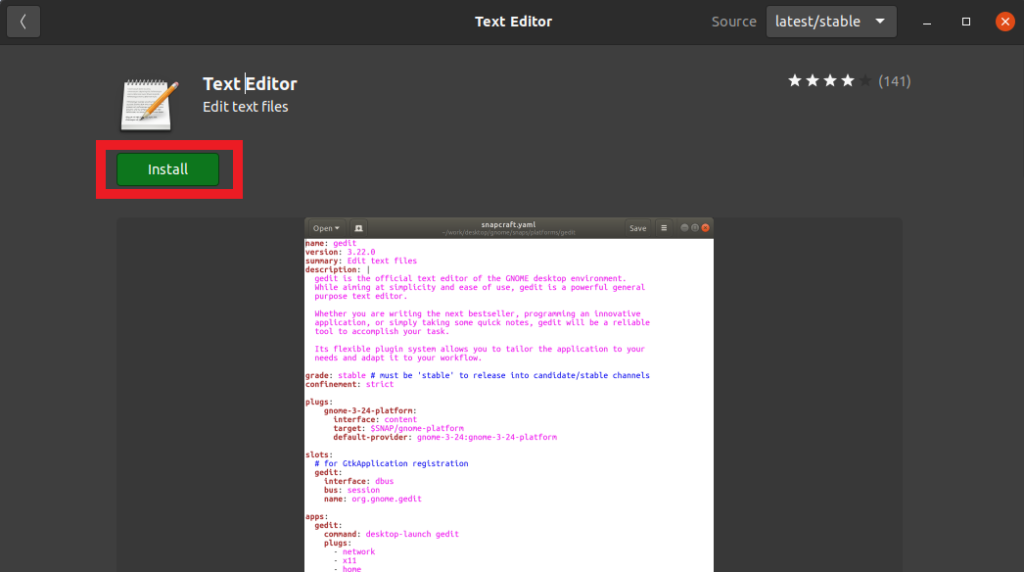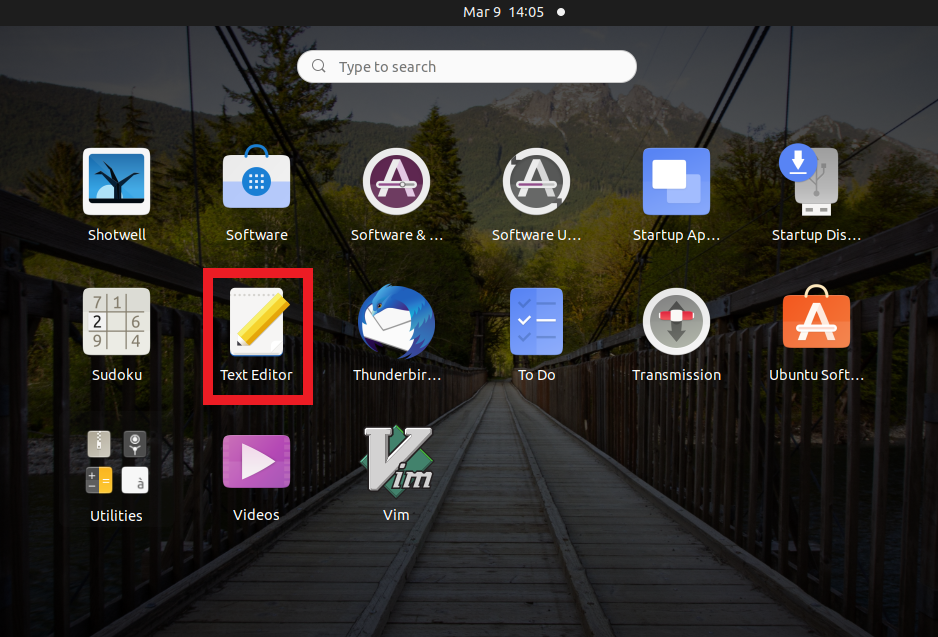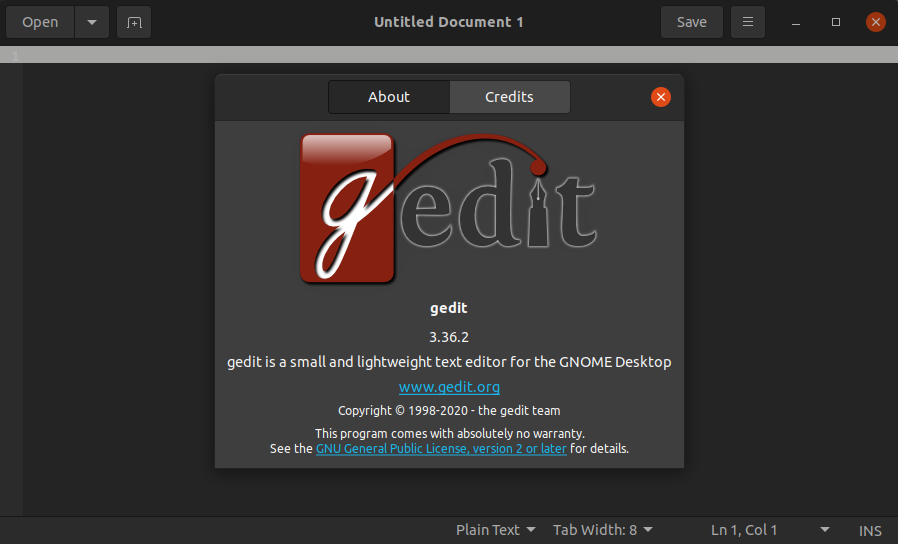This post may contain affiliate links/ads and I may earn a small commission when you click on the links/ads at no additional cost to you. As an Amazon Affiliate, I earn from qualifying purchases. Techsphinx also participates in the StationX Affiliate program. You can read my full disclaimer here.
In this tutorial, I will show you how to install Gedit text editor on Ubuntu.
Gedit is a small and lightweight text editor that comes pre-installed with GNOME Desktop Environment.
As you know Ubuntu also ships with Gnome Desktop so Gedit will be installed by default. But if you are using another desktop environment and want Gedit as your text editor, then you have to install it manually.
Important: The latest stable version of Gedit is 3.38 as of writing this post. If you follow the installation steps mentioned in this post on Ubuntu 20.10 and above, then you will get the 3.38 version. For Ubuntu versions 20.04 and below you will get Gedit version 3.36.
I am installing Gedit on Ubuntu 20.04 in this post.
Features of Gedit
Here are some notable features of Gedit Text Editor.
- Files are opened in tabs.
- Full support for internationalized text (UTF-8).
- Syntax highlighting for many languages (Python, Shell, C, C++, HTML, CSS, JavaScript and many more).
- Customization of fonts and colors.
- Print and print preview support.
- Regex (Regular expressions) support for search and replace.
- Integrated file browser
- Spell-checking and word auto-completion.
- Auto indentation
- Text wrapping
- Show Line numbers
- Highlight current line and matching brackets
- Remotely edit files.
- Backup files
Apart from all these features Gedit also contains useful plugins and has a flexible plugin system to dynamically add new advanced features.
Pre-requisites
- Ubuntu Installed and Running
- Active Internet Connection to download Gedit
- Sudo Privileges
How to Install Gedit on Ubuntu?
You can install Gedit on Ubuntu by two methods:
- Graphically
- Using terminal
First, let’s start with the graphical method.
Install Gedit on Ubuntu Graphically
Gedit is available in the Ubuntu software center.
1. Start the Ubuntu Software center.
2. Search for Gedit. You’ll see the “text editor” under search results.

3. Click on Install and provide authentication to install the “Text Editor”.

4. Once installation is finished, you’ll see the option to remove.
5. Start Gedit via the applications menu.

Install Gedit on Ubuntu via Terminal
Gedit is available in the Ubuntu repository so you can install it easily using the apt command.
1. Before installing Gedit, it’s recommended to update the software repositories.
sudo apt update
2. Now, to install gedit on Ubuntu run:
sudo apt install gedit
3. Once installation is finished, you can start gedit using the command:
gedit

Using Gedit
Here’s a list of keyboard shortcuts you can use to increase your workflow using Gedit.
| Shortcut | Description |
| Ctrl + F | Find a String |
| Ctrl + G | Find the next instance of the string |
| Ctrl + Shift + G | Find the previous instance of the string |
| Ctrl + I | Jump to a particular line |
| Ctrl + H | Find and Replace |
| Ctrl + N | Open a new file |
| Ctrl + T | Open a new tab |
| Alt + n | Jump tabs (for example, to jump to 4th tab use Alt + 4) |
| Ctrl + Shift + W | Close all opened tabs |
| Ctrl + L | Convert selected text to lower case |
| Ctrl + U | Convert selected text to upper case |
| Shift + F7 | Check spellings |
Apart from these shortcuts, you can use all the basic shortcuts like “Ctrl + c” to copy, “Ctrl + v” to paste etc. I only mentioned the most common shortcuts. If you want the complete list of shortcuts that you can use with Gedit, then go to Gnome Help for Gedit.
Conclusion
Installing Gedit on Ubuntu is easy, isn’t it?
Gedit is a great graphical text editor for beginners, but the true power of Linux lies in the terminal.
If you are planning to stick to Linux for a long time, then I recommend you to start using a command-line text editor. There are many great command-line text editors available for Linux.
If you like this post, then follow Techsphinx on Facebook and Twitter for more reviews, tricks, tips and tutorials.
This article needs update or correction? Report the issue here so I can update it.





